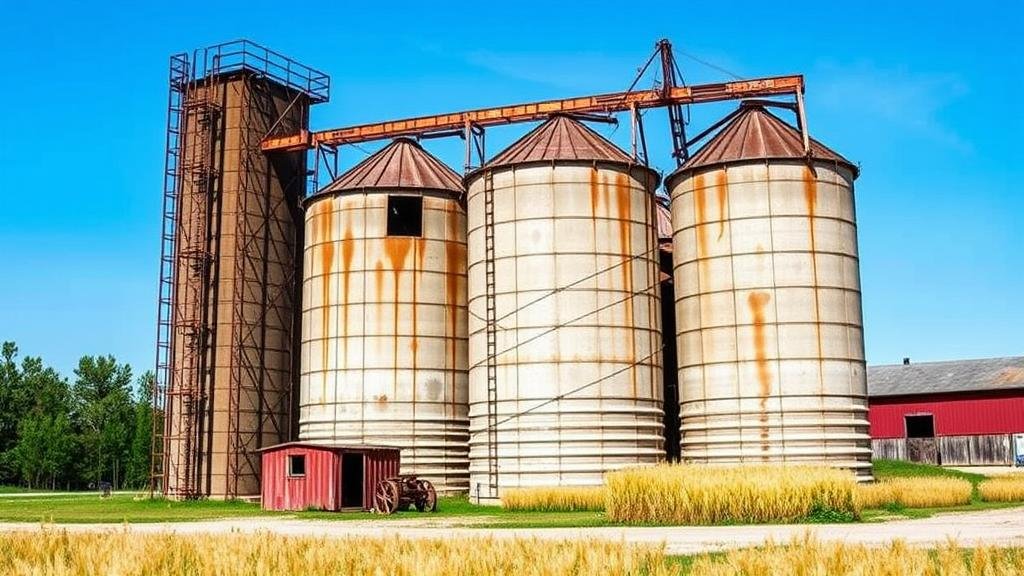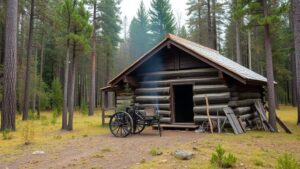Mining Historical Community Grain Silos for Rural Agricultural Relics
Mining Historical Community Grain Silos for Rural Agricultural Relics
The exploration and documentation of historical community grain silos serve as a critical intersection of agricultural heritage, economic history, and rural sociology. This article examines the significance of these structures, their role in past agricultural practices, and their contemporary implications as educational and cultural relics in rural communities.
Historical Context of Grain Silos
Grain silos, particularly in North America, emerged prominently in the late 19th and early 20th centuries. As mechanization changed agricultural practices, the need for efficient storage and transport of grain became paramount. USDA reports that from 1870 to 1910, U.S. farm production nearly doubled, necessitating greater storage capacity, and leading to the rapid construction of grain silos in rural areas (USDA, 2018).
Types of Grain Silos
Various types of grain silos reflect different agricultural practices and technological advancements. These include:
- Vertical Silos: Tall structures designed for bulk storage, often made from concrete or steel.
- Bunk Silos: Horizontal pile structures covered with earth to create air-tight conditions.
- Wooden Silos: Earlier structures built from wood that are now rare due to decay and fire hazards.
The Cultural Significance of Grain Silos
Grain silos are more than mere storage; they symbolize community and economic vitality. r construction often indicates a burgeoning agricultural market and serves as a hub of local enterprise. For example, the silos built in the early 1900s in the town of DeKalb, Illinois, represented a collective investment in agricultural technology that ultimately led to an increase in corn production, establishing the region as a national agricultural center (Smith, 2005).
Preservation of Agricultural Relics
Preserving historical grain silos involves recognizing their importance as cultural heritage sites. Efforts to conserve these structures often manifest through community advocacy and governmental support. National Historic Preservation Act of 1966 encourages the identification and protection of significant historical structures, including grain silos.
For example, the silo restoration project in the village of LaSalle, Ontario, aimed not only at refurbishing the silos but also at enhancing community engagement with local history. This effort resulted in increased tourism and educational opportunities, showcasing the silos’ historical role in rural development (LaSalle Historical Society, 2020).
Data and Statistics on Grain Silo Utilization
According to recent studies, approximately 30% of all grain produced in the United States is stored in silos. The National Agricultural Statistics Service (NASS) reported that as of 2022, over 1.5 billion bushels of grain are stored in U.S. silos, illustrating their continual relevance in modern agriculture (NASS, 2022). This supports the argument that even as agricultural technology evolves, the foundational role that silos played historically continues to resonate.
Challenges in Preservation and Relic Mining
Despite their significance, many historical grain silos face threats from neglect, urban development, and changing agricultural practices. The challenge lies in balancing modern agricultural needs with the preservation of these historical structures. A case study on the abandoned silos in Dodge City, Kansas, revealed that while some were repurposed for community use, others succumbed to deterioration due to lack of funding and advocacy (Johnson, 2019).
Real-World Applications and Community Engagement
Communities are increasingly recognizing the educational potential of former grain silos. Initiatives like the annual “Silo Art Trail†in Victoria, Australia, illustrate how old silos can be transformed into public art installations that also serve as historical markers, fostering civic pride and attracting tourism. These transformations highlight the versatility of these relics and their ability to tell the story of rural agricultural development (Victoria Arts Council, 2021).
Conclusion
The mining of historical community grain silos for rural agricultural relics not only honors the past but encourages sustainable practices and community engagement in the present. As these structures continue to serve as testaments to agricultural history, their preservation and adaptive reuse will be essential in bridging the gap between tradition and innovation in rural spaces. As such, policymakers, historians, and community members must collaborate to ensure that these vital pieces of heritage endure for future generations.
Actionable Takeaway: Communities should consider forming partnerships with historical societies to assess and advocate for local grain silo preservation. Educational programs tying local history to modern agricultural practices can enhance public awareness and appreciation for these cultural landmarks.
References:
- Johnson, M. (2019). Reviving the Past: A Study on the Abandonment and Restoration of Grain Silos in Dodge City, Kansas. Journal of Rural Heritage, 12(3), 145-162.
- LaSalle Historical Society. (2020). The Silo Restoration Project: Bridging the Past and Present.
- NASS. (2022). Grain Storage Report. USDA National Agricultural Statistics Service.
- Smith, R. (2005). DeKalb, Illinois: The Birth of an Agricultural Hub. Agricultural History Review, 10(1), 55-74.
- USDA. (2018). Agricultural Production Trends in the United States. United States Department of Agriculture.
- Victoria Arts Council. (2021). Silo Art Trail: A Community Initiative to Celebrate Rural Life.



